Lending a hand with Food on Foot
November 22, 2010
Food on Foot is a Hollywood-based charity that since 1996 has offered homeless people in the community hot meals, clothing and a path off the streets toward self-sufficiency.
Founder Jay Goldinger launched the project by distributing a handful of meals from the trunk of his car. Today, Food on Foot has evolved into a weekly Sunday program serving more than 250 meals to those in need.
As always, charitable projects like this depend on the kindness of strangers generously donating money, time and volunteer effort to make it all work. This Thanksgiving Day, Food on Foot is full up on volunteers but needs to find several sponsors to donate $250 each and help distribute food, sleeping bags and bus tokens to Hollywood’s poor and homeless at its Hollywood site, located at 1625 N. Schrader Blvd. The Thanksgiving event runs from 2 p.m. to 5 p.m. For more information, call (310) 860-0022.
And looking ahead, as a year-round project Food on Foot can always use your help and support, with many ways to participate and assist. See their volunteer and donation pages to learn more.
Posted 11/22/10
Food safety’s a matter of degrees
November 22, 2010
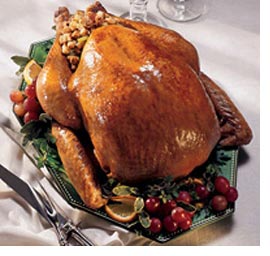 While you’re busy with the soup-to-nuts planning that goes into making Thanksgiving dinner, take a few minutes to check out one of the most important ingredients—a working knowledge of how to get the bird to the table safely.
While you’re busy with the soup-to-nuts planning that goes into making Thanksgiving dinner, take a few minutes to check out one of the most important ingredients—a working knowledge of how to get the bird to the table safely.
The USDA has tips for properly thawing, stuffing and roasting a turkey. If you’d like to talk it over, the USDA’s meat and poultry hotline will be open for business and staffed with real live technical information specialists on Thanksgiving from 5 a.m. to 11 a.m., Pacific Standard Time. The number is 1-888-674-6854. The USDA’s live chat feature, www.askkaren.gov, also will be available.
Here are some other food preparation tips, courtesy of the Los Angeles County Department of Public Health:
• Wash fresh fruits and vegetables thoroughly before eating or cutting them.
• Separate raw meats and poultry from other foods such as fruits and vegetables. Avoid cross-contamination by using separate cutting boards, knives, and platters for these foods.
• Wash cutting boards, utensils, and platters after preparing each food item and before going on to the next item.
• Bring sauces, soups, and gravies to a rolling boil when re-heating.
• Keep hot foods hot. Use chafing dishes or pans with Sternos or other heating devices, or keep foods in the oven at a temperature to ensure they remain at 135° F or above.
• Keep cold foods cold. Refrigerate leftovers within 2 hours.
• Don’t “taste test” food or drinks to see if they have spoiled.
Posted 11/22/10
Here comes the Hollywood Christmas Parade
November 22, 2010
 It’s been a showbiz tradition for 80 years, beginning as the “Santa Claus Lane Parade” (and inspiring Gene Autry’s classic 1946 holiday tune, “Here Comes Santa Claus.”)
It’s been a showbiz tradition for 80 years, beginning as the “Santa Claus Lane Parade” (and inspiring Gene Autry’s classic 1946 holiday tune, “Here Comes Santa Claus.”)
This Sunday, November 28, 2010, the Hollywood Christmas Parade returns with Grand Marshal Larry King and a host of celebrities, marching bands, giant balloons, floats and high-stepping equestrians. It’s fun, it’s entertaining, and it’s for a good cause—benefiting the Marine Toys for Tots program, for more than six decades providing needy children with a new holiday toy and the comfort and reassurance that they haven’t been forgotten.
The event takes place at 6:00 p.m., beginning at Hollywood Boulevard and Orange Avenue in front of the legendary Grauman’s Chinese Theatre, following a clockwise route east to Vine, south to Sunset, then west to Orange and north again to complete the circuit. Curbside viewing along the route is free, but if you want a grandstand seat, it’ll cost you $35, with group rates available. Full admission information here, and transportation information here.
And if you can’t make it in person, it’s also televised live and set for rebroadcast later on the Hallmark Channel, the Hallmark Movie Network and various local TV stations across the nation throughout December.
Posted 11/22/10
Visit some cool cats
November 22, 2010
 And you thought the Pilgrims had it tough.
And you thought the Pilgrims had it tough.
This Thanksgiving weekend, go back to the Ice Age at the Natural History Museum of Los Angeles for the tale of a giant, saber-toothed cat and her kitten trying to make their way in a cold, cold world.
“Ice Age Encounters”, the museum’s new show, has officially opened, and on Saturday and Sunday, November 27-28, guests can finally check out the museum’s new animatronic saber-toothed cat puppet. It’s a one-of-a-kind collaboration among paleontologists, performance artists and puppet engineers from Jim Henson’s Creature Shop, which was commissioned to create the new puppet, and it’s aimed at transporting audiences to the L.A. of the late Pleistocene Era, when big cats roamed the Mid-Wilshire District. Cool!
Location: North American Mammal Hall, Level 2. Two shows each day, at 1:30 pm and 3:30 p.m. Free with paid museum admission.
Posted 11/22/10
Shop for a good cause at Divine Design
November 22, 2010
 Don’t shop till you drop on Black Friday. Hold some of your purchasing fire power in reserve until next week, when you can head over to Project Angel Food’s spectacular holiday marketplace at the old Robinson’s May department store, 9900 Wilshire Boulevard in Beverly Hills.
Don’t shop till you drop on Black Friday. Hold some of your purchasing fire power in reserve until next week, when you can head over to Project Angel Food’s spectacular holiday marketplace at the old Robinson’s May department store, 9900 Wilshire Boulevard in Beverly Hills.
It’s called Divine Design and is billed as the West Coast’s premiere shopping fundraiser, with fashion, beauty and home design goods from an array of high-end designers and brands.
Proceeds from the event go to Project Angel Food, which provides free, home-delivered meals to people with HIV-AIDS and other debilitating conditions.
A gala opener is set for Dec. 1, along with a VIP shopping cocktail party on Dec. 2. The marketplace will be open to the public from Dec. 3-Dec. 6. Admission is $25. Full details are here.
Posted 11/22/10
A CalFresh start
November 19, 2010
It was a long time ago, but when Bob McKinnon traces the successful trajectory of his life—his Madison Avenue advertising career, the creation of his own boutique firm—he thinks about food stamps.
He remembers how they helped him eat better so he could study harder. His mom, a single mother of three, had been diagnosed with cervical cancer and needed help from the government to steady her family during the rough patches.
But McKinnon also remembers the way some people denigrated that helping hand, calling it a handout “for people who are lazy or aren’t trying.” And, in that regard, not much has changed over the years. The stigma lingers. Only now, McKinnon, 41, is in the forefront of a movement in California to do something about it.
McKinnon, the founder of a public-spirited communications and advocacy firm in New York, was enlisted to help California rebrand its food stamp program in the hopes of undoing decades of negative stereotypes and encouraging eligible participants to step forward and sign up.
In October, California’s food stamp program officially became known as “CalFresh: Better Food for Better Living.” The name—and accompanying logo—followed months of consumer research, strategy sessions, stakeholder meetings and focus groups from Merced to San Bernardino, comprised of low-income Californians receiving assistance or eligible for it.
“Looking back, to think that at some point my mom had to feel badly for even a second to help us, bothers me to do this to this day,” says McKinnon, whose company, YellowBrickRoad, specializes in “advocacy communications” on issues ranging from childhood obesity to climate change. “Do critics of these programs really think people don’t want to feel pride?”
The rebranding process began two years ago, when the U.S. Department of Agriculture changed the name of the food stamp program to the Supplemental Nutrition Assistance Program, or SNAP. The change was made to reflect the reality that food stamps and scrip were abandoned years ago in favor of electronic debit cards. The federal government told the states they could adopt the same name for their programs or come up with new ones.
California seized the challenge like no other—for good reason.
The state’s 3 million food assistance recipients represent just half of those eligible for the benefits. Only Wyoming has a worse record. As a result, California has been missing out on an estimated $4.9 billion in federal nutrition assistance that would flow through the state’s ailing economy. The program pays a monthly benefit of $200 for an individual and $526 for a household of three.
The California legislature, with a strong push from Oakland-based California Food Policy Advocates, passed a bill in 2008 by Assemblyman Jim Beall, Jr. that not only called for the creation of a new name but also lifted asset restrictions that effectively required some applicants to exhaust virtually their entire net worth to qualify.
“One of the things we wanted be clear about is that we didn’t want to put a new name on an old program,” says George Manalo-LeClair, senior director of legislation for CFPA, which assured lawmakers that no public money would be spent on the process. “We recognized that this was not the No. 1 priority for the state.”
To research and test potential names for the state’s Department of Social Services, The California Endowment stepped in with a grant of $150,000, enough to cover some of the costs of YellowBrickRoad and Lake Research Partners, which conducted the focus groups.
Manalo-LeClair says his group and others were determined to come up with a name that would resonate positively with potential participants, many of whom have been hit hard by the economy but could not see themselves applying for food stamps. The idea was to create branding that stressed the nutritional, rather than the welfare, aspects of the program.
California officials, Manalo-LeClair says, didn’t want to follow the path of the federal government, which “took words that the House liked and that the Senate liked and squished them together.” The result, he says, was a name that focus groups agreed conjured up images of a welfare program with “long lines and hassles.”
It was during these sessions, as interviewers asked participants to offer words that suggested healthy eating, that “fresh” first surfaced. Many involved in the process liked that it worked on two levels—fresh, as in fresh food, and fresh, as in “you’ve hit rock bottom and need a fresh start,” as McKinnon put it.
Some within the bureaucracy, however, weren’t nearly as thrilled when presented with the proposed CalFresh name. They thought it was vague and confusing. Without the tag line, it didn’t even allude to the program’s key aspirations—to provide food and help. How would people know even to apply?
“When you’re dealing with government stakeholders, they want to come up with a lot of acronyms,” McKinnon responds. “But you’ve got to ask: Who is our audience? We need to make sure that the name appeals to them first. To us, a little bit of abstraction was perfectly acceptable so people could see themselves in the program.”
But the criticisms from the insiders, who were concerned about the program’s success, were mild compared to those that came after California’s first lady Maria Shriver unveiled the rebranding during a media event in Long Beach. Conservative radio hosts and bloggers feasted on the change.
Typical among them was this from self-proclaimed “Advice Goddess” blogger Amy Alkon, the author of a recent book bemoaning the lack of civility in American life : “Sorry, but there should be a stigma against using food stamps…My parents raised us to think it was shameful not to support yourself.”
Food advocates in and out of government seethe when they hear intentionally provocative off-the-cuff takes like these, which misrepresent the demographics of those receiving help and the impact of the nation’s economic meltdown on working families. The fact is that children represent roughly half of the recipients.
“Someone with an opinion like that might lose their job tomorrow and then need food assistance themselves,” says Judith Lilliard, who oversees the food stamp program for Los Angeles County’s Department of Public Social Services. “We’re trying to build a healthy society here. We don’t want people starving in the streets because they’re embarrassed to apply for food stamps.”
To that end, Lilliard’s department has been a leader in streamlining the application process, allowing people to sign-up by mail, phone and, soon, through the Internet. The county also recently began a mobile service, dispatching a computer-outfitted truck into neighborhoods with high numbers of eligible participants.
Underlying all these efforts, Lilliard says, is recognition by the county that many of the working poor will not enter a government building to apply for food assistance because they feel it’s humiliating.
Lilliard, like McKinnon, knows something about that feeling.
In the mid-1960s, she grew up in housing projects in East L.A. and low-rent apartments in South-Central. She remembers tagging along with her mom to pick up the family’s food stamps, which back then were distributed by banks. The recipients were told to line up outside at a walk-up teller.
“I remember thinking, “This is not right. Why are we out here when they have a perfectly good building,’ ” Lilliard says. “The bank felt that people getting food stamps weren’t good enough to go inside the building.”
Lilliard says that, over the years, she’s held a variety of positions within her department’s general relief and food stamp division. (“We’ll be renaming that soon, by the way.”) But it was her pre-teen years that Lilliard says have given her a special qualification for her job as division chief—empathy.
“I’m good at being able to put myself in someone else’s shoes,” she says, “because I’ve been there myself.”
Before you tuck into turkey, read this
November 18, 2010
Jean Tremaine would like to interrupt the coming feeding frenzy with a public service announcement:
Thanksgiving dinner is a meal, “not an all-you-can-eat buffet that starts in the morning and goes through the weekend.”
Not that Tremaine, director of the county’s public health nutrition program, wants to be a turkey day buzz-kill.
By all means, she says, enjoy those once-a-year specialties. (Especially if depriving yourself at dinner means you’ll make up for it with a chocolate binge at home later.)
But come in with a game plan. Eating strategically is more than just a way to strike a blow for eating sanity at a meal that can easily weigh in at 3,000 calories or more.
It’s also a chance to create a healthy eating pattern for all of the holiday temptations ahead.
“Heading into the overeating season, it’s a good opportunity to set the tone and come out of this relatively unscathed,” says Tremaine, a 23-year county veteran whose department oversees nutritional education programs, helping to translate healthy eating practices into individualized approaches for L.A.’s ethnically diverse communities.
Otherwise, if you don’t watch it, “you’re in a food coma for the months of December and January.”
To stay out of that state—and to do your part to combat America’s obesity epidemic—here are a few of Tremaine’s tips for navigating the Thanksgiving bounty.
1. Know your must-have dish, and then take it easy on the rest.
“The most important thing to me is the pumpkin pie. My sister makes it. It’s just the classic recipe off the can, with a little more spices.”
2. Concentrate on the people around the table.
“Enjoy the socializing and not focus so much on the food. It’s called thanks giving. Think about what’s good in your life.”
3. Divide and conquer your dinner plate.
Load half your plate with vegetables (preferably not the kind that come doused in canned soup and topped with fried onions.) Leave one-quarter of the plate for turkey (no skin, please) and the rest for a starch of your choice. “Because there are so many simple carbohydrates, I skip some of them. I don’t need stuffing and mashed potatoes and a roll.”
4. Make the pre-dinner nibbles healthy.
“Normally, a Thanksgiving dinner starts hours before dinner.” Instead of “high fat dip, pretzels and peanuts,” offer guests seasonal fruit like sliced Fuyu persimmons, or a bowl of Satsuma tangerines.
5. Take it easy on the alcoholic beverages.
“Limit the booze. It’s high in calories and it lowers your eating inhibitions.” If you do imbibe, alternate your drinks with glasses of water.
None of this should make you think that Tremaine is some kind of joyless anti-food crusader. On the contrary, she’s the kind of person who enjoys seafood-eating vacations in places like Sicily or Sardinia. But, as a longtime Weight Watcher, she has learned how to combat a holiday tradition of “eat until you hurt.”
“A couple of decades ago, I stopped doing that,” says Tremaine, 63. “It’s a wonderful feeling not to eat until you hurt.”
And she thinks a less gluttonous approach can help people find more meaning in the holiday along the way.
“It’s really an occasion for reflection,” she says, “to ask ‘What am I grateful for?’ ”
For some other helpful hints, check out this turkey-carving video and make sure you’re up to speed on how to cook and serve your feast safely.
Posted 11/18/10
Finally, it’s in the (reusable) bag
November 16, 2010
Hoping to create a domino effect across the region, the Los Angeles County Board of Supervisors on Tuesday voted to ban plastic grocery bags, long considered an environmental menace and aesthetic blight.
The ordinance, which would take full effect next July, would outlaw the ubiquitous single-use bags only in stores in the county’s unincorporated areas, home to 1.1 million people. But the board majority made clear that the larger goal is to get the county’s 88 separate cities to adopt the same law.
Ultimately, the board hopes that the movement’s momentum will carry to Sacramento, where a nearly identical measure was recently defeated in the state senate after industry opponents to the ban spent more than $2 million on lobbying in the weeks before the highly-anticipated vote. Supervisors argued that a statewide measure would bring conformity to a potential patchwork of municipal laws that could confuse customers and businesses alike.
“When we pass an ordinance of this type, the rest of the state has to take notice,” said Supervisor Zev Yaroslavsky, a leading proponent of the ban, who called the bags “urban tumbleweeds.”
Should a groundswell not materialize, Yaroslavsky said, “we can do a lot here because we are 10 ½ million people….Even if nobody else does a single solitary thing, we can make a difference.”
Added Board Chairman Gloria Molina: “This is a major undertaking for L.A. County and I’m proud. The wave is beginning here…”
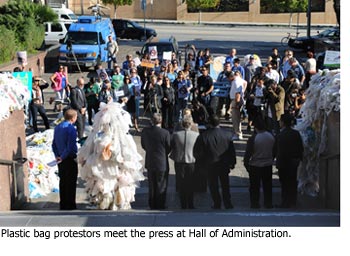 The measure was approved by a 3-1 vote. Supervisors Yaroslavsky, Molina and Mark Ridley-Thomas supported the ban, while Supervisor Michael D. Antonovich voted against it. Supervisor Don Knabe was not present.
The measure was approved by a 3-1 vote. Supervisors Yaroslavsky, Molina and Mark Ridley-Thomas supported the ban, while Supervisor Michael D. Antonovich voted against it. Supervisor Don Knabe was not present.
In Los Angeles County alone, more than 6 billion plastic bags are used each year, with only about 5% of them being recycled. Although the bags may feel flimsy, they are molecularly almost indestructible, surviving hundreds of years without degrading. Meanwhile, they litter the streets, clog landfills and flow into the ocean, endangering marine life and the commerce of the coastline.
The board’s action, which comes after several years of failed voluntary efforts, is certain to be welcomed by the growing numbers of environmentally conscious shoppers who’ve already started toting reusable bags to the market or who’ve been opting for paper, which is biodegradable. But a good number of consumers no doubt will not immediately embrace the mandated changes in their shopping habits.
The new county law not only bans single-use plastic bags, it also specifies what sort of bags can be provided in their place. Stores would have the option of giving their customers either paper bags—for which they must charge 10-cents apiece—or reusable bags. The intent of the 10-cent charge is to push consumers towards the reusable bags, the most environmentally-friendly option.
On Tuesday, the board approved an amending motion that broadened the ordinance’s definition of what constitutes a “reusable bag.” As originally written, the law would have required that the bags meet various tests for strength and durability, and that they be machine-washable. Under the amended version, the bags also could be made of materials that can be wiped clean or disinfected by hand. These standards are designed to prevent retailers from offering consumers new kinds of plastic bags that are also bad for the environment.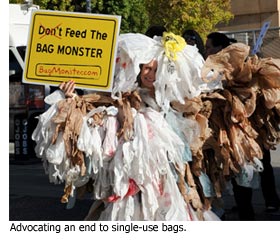
The board approved a second amendment specifically stating that reusable bags must comply with state and federal restrictions on permissible levels of lead and other metals, including cadmium. That 11th-hour addition came in the wake of recent reports that some reusable bags have contained high-levels of lead, leading U.S. Sen. Charles Schumer (D-N.Y.) this week to ask federal regulators to investigate the issue.
The board also directed that plastic carryout bags be phased out by next July at all county-operated facilities and offices.
In anticipation of the widely publicized vote, the board’s usually quiet meeting room was filled on Tuesday with boisterous supporters and opponents of the measure. The same lobbying organization that helped undo the Sacramento legislation—the American Chemistry Council—had recently shifted its forces to the battle of the bags in L.A., advancing the argument that the ban would kill small manufacturing businesses and leave hundreds of employees without jobs.
That theme was sounded by numerous speakers who briefly testified before the board, including one elderly woman who complained that there was “a lot of focus on plastic bags instead of people.”
Yaroslavsky said he was sympathetic to those concerns but noted that the continued fouling of the ocean could jeopardize the coastal economy and potentially lead to significant job losses.
“So at the end of the day,” he said, “we do what we think is right. And what’s right is to be part of the solution, not part of the pollution.”
Posted 11/16/10
Remembering Our Vets in concert
November 12, 2010
On Saturday, November 13, the Culver City Symphony Orchestra presents a special “Veterans Day Remembrance Day” concert, fittingly performed in the orchestra’s home venue of the Culver City Veteran’s Memorial Auditorium. The program includes a medley of themes for the United States Armed Forces, as well as Beethoven’s Symphony No. 3, “Eroica” and selections by Stravinsky and Schumann. Click here for further details.
Posted 11/12/10




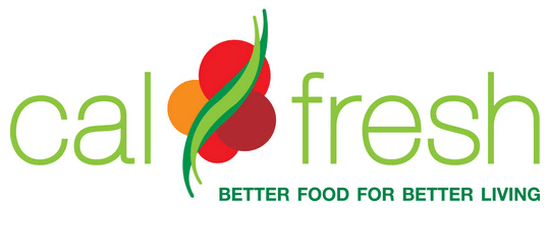
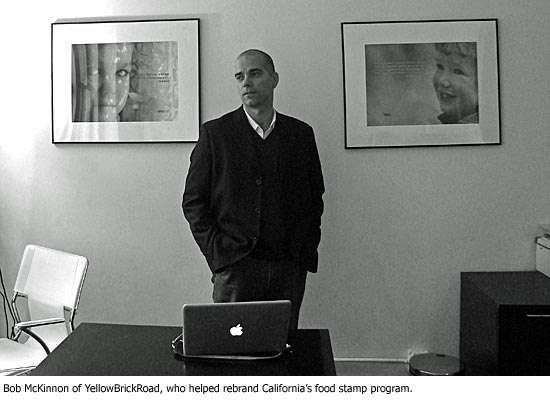


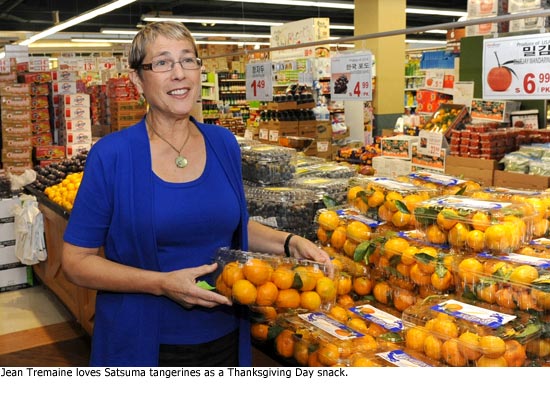
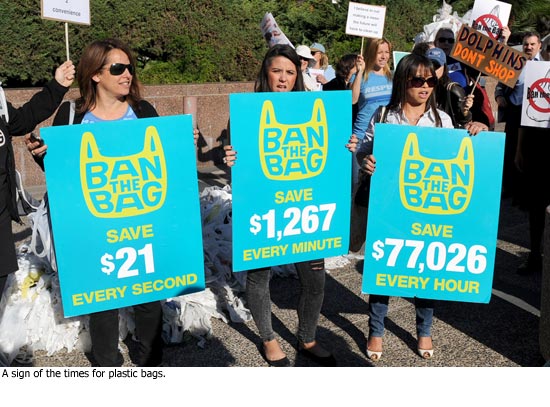
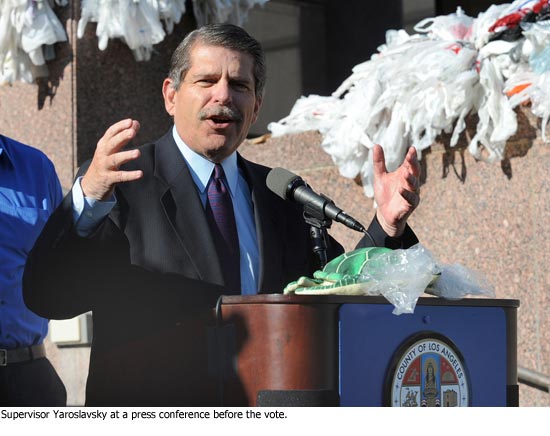





 Check for the latest closure information
Check for the latest closure information








